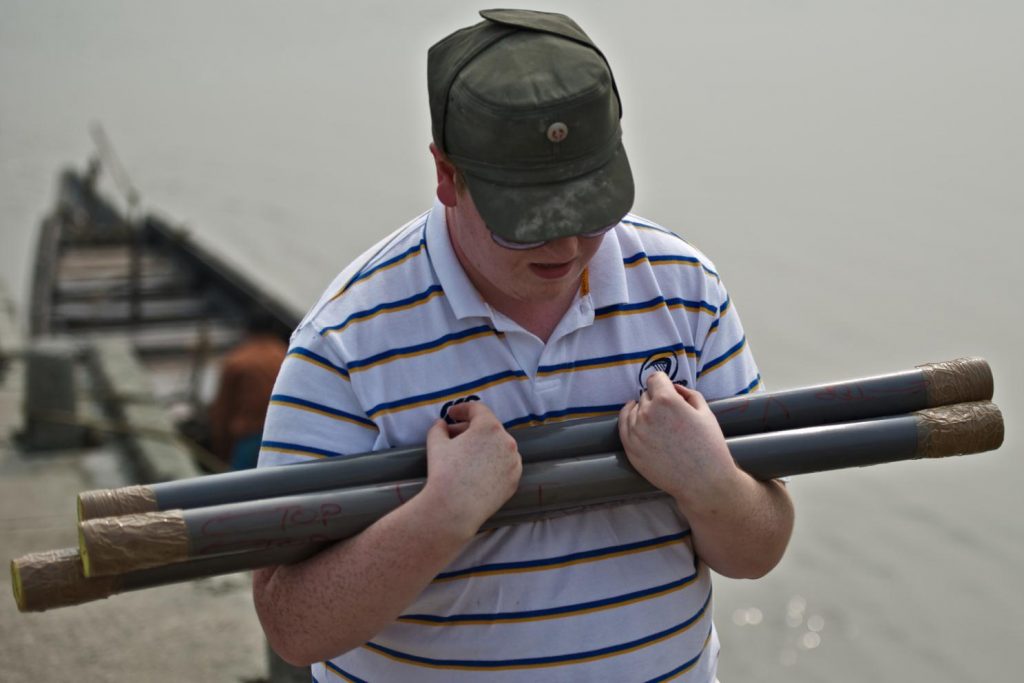

We shall not cease from exploration

November 13, 2012
“We shall not cease from exploration And the end of all our exploring Will be to arrive where we started And know the place for the first time. Through the unknown, unremembered gate When the last of earth left to discover Is that which was the beginning; At the source of the longest river The voice of the hidden waterfall And the children in the apple-tree Not known, because not looked for But heard, half-heard, in the stillness Between two waves of the sea.”
This is an excerpt from the poem ‘Little Gidding’, No. 4 of ‘Four Quartets’ by the American poet T.S. Eliot. Apart from Eliot’s mastery of the English language through encapsulating human nature and indeed the complexities involved, it is a poem that somewhat invokes memories of my final year in secondary school, for two reasons I would like to elaborate on this.
It’s been over six years since I’ve sat in the sanitary white rooms of a dentist’s surgery. I am in some regards rather apprehensive about visiting dentists and the last time I visited one was during my final year of secondary school. I had just received my leaving certificate results (Irish equivalent to the A-levels) and was about to start my undergraduate degree at University College, Dublin. I was more of a keen arts and humanities student from my humble academic beginnings and had been reading Eliot and Yeats extensively, so poetry was still fresh in my mind after finishing my leaving certificate. Through my mother’s insistence I was brought to the dentist’s surgery as it had been again a number of years since seeing one. It was more-or-less a pleasant enough experience, a cavity or two nothing overly serious. Six years on, I was again back in the dentist’s surgery only this time being treated by a dental student. Again, the experience is always much friendlier and less painful than one imagines but it did invoke my love of poetry and X-rays, especially since I had to get an X-ray of my teeth. I ended up chatting with the radiographer about the voltage and current and exposure times that radiographers operate at when dealing with people, compared to what we earth scientists do the parameters are a fair bit different (especially since sediment can’t actually become seriously injured through our own complacency!).

The above image really is what Joyce might remark as being a ‘portal of discovery’ and in a sense it combines my twin loves of poetry and science, the objective detail with the subjective experience. What we are seeing here is a radiograph image aligned with a graph of X-ray intensity counts from the ITRAX core scanner, for the ratio of zircon to rubidium against calcium. The surface of these cores from the Indian Sundarbans appears to be homogeneous and unctuous ooze type material, almost impossible to make out any structure or pattern (and we scientists love patterns!). The radiograph, like that one might get for a broken limb or indeed teeth that need to be examined for cavities, illuminates the underlying features, the relict patterns of sedimentation. These sedimentary units (i.e. the alternating series of black and grey lines) reflect what may be considered to be a tidal signature, with partially layered structures of tidal rhythmites. These layers are essentially a series of fluctuating sand and mud deposition, in which cycles of flood-slack-ebb-slack tidal currents produce these laminations. Now, this might seem obvious, given that we have been dealing with a marine environment on the fringe of the Bay of Bengal. However, unless you have the evidence to back up a contention, then your conclusions are somewhat spurious and untestable. What is even more interesting is the fact that these units of alternating grey and black (i.e. sand, silt and mud), although not entirely preserved in visual terms, appear to be reflected in the geochemistry in what one might call a ‘geochemical palimpsest’. However, it will take hours of post-processing and calibration to confirm these observations. To quote Eliot: “We shall not cease from exploration”.
So, this week I will have to return for another dental appointment, this time the results of the X-rays will be in, and doubtless the experience will be somewhat more complicated than a simple filling. With the works of Eliot in my jacket pocket and curiosity for the unknown (even if it is my own teeth that are being examined) I think the experience can be just as interesting and enjoyable as discovering tidal rhythmites on my Sundarbans sediment. Oh the joys of being a patient!
Till next time folks!
Rory Flood, PhD Student, Queen’s University Belfast, School of Geography, Archaeology and Palaeoecology (GAP), http://www.qub.ac.uk/schools/gap/
You might also be interested in...
Van Walt Guidelines for sampling for PFAS in Groundwater
November 13, 2024We need to make clear, that at the time of writing, there are no ISO or EN standards which deal with the sampling of groundwater for PFAS.
Read MoreSpot measurement v. continuous environmental monitoring
August 25, 2023Environmental monitoring has developed considerably over the years. From the time when a consultant went out monthly or quarterly with a dip tape to monitor the groundwater level in a borehole, wind forward...
Read MoreMeasuring Nitrates (NO3, NO3-N) in the field
June 20, 2023The interest in Nitrates is nothing new. One way or another we have been measuring them for half a century.
Read MoreVan Walt Environmental Equipment
A small selection of our environmental equipment